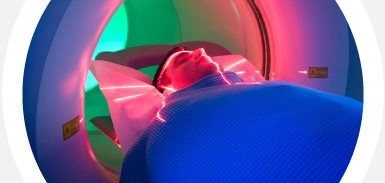CT, sometimes called a CAT scan, is a safe, fast and painless exam that uses x-ray technology to obtain detailed cross-sectional images of the body. Those images can be combined to generate three-dimensional images
CT is commonly used to evaluate internal organs, bones, soft tissue and blood vessels. CT can be used to effectively diagnose and evaluate a wide range of medical problems including cancer, cardiovascular disease, infections, appendicitis, trauma, urinary tract problems, and musculoskeletal disorders. CT guidance may sometimes be used for injections and biopsies.
Prepare for your Visit
You should plan to wear loose, comfortable clothing. Depending on the type of CT study your physician has ordered, you may be instructed not to eat or drink anything for 4 hours prior to the exam.
During Your Visit
Notify the technologist if you might be pregnant.
Some examinations require contrast material. Depending on the exam, that may involve drinking something, or having it injected through an IV.
The CT scanner is a machine with a large round space in the middle. Our technologist will help you lie on an examination table that slides the part of your body to be studied into the open space. You may notice that lines of light shine on you to aid the technologist in proper positioning. The technologist will step behind a window, but will still be able to see and speak with you. In some cases, you may be asked to hold your breath. As you lay still, an x-ray source and detectors inside the machine quietly rotate around you for a few seconds, producing many images, known as slices. Once the images have been generated, the examination table slides out of the space. The technologist will verify the quality of images, and if everything is OK, you’re done!
Afterwards, the images are loaded into a computer and digitally combined and reformatted as necessary to provide a view of the anatomy of interest.
After Your Visit
Once the CT study is complete, you can return to normal activity. If contrast was given, fluids are encouraged to help contrast material pass from the body. One of our radiologists will interpret the exam and report the findings to your physician.
